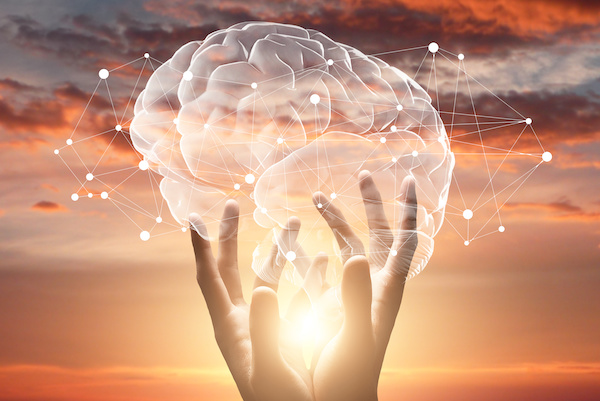Published on
Cultural Intelligence for Better Communication in Higher Education

Higher education has become more and more diverse. According to recent reports from the U.S. Census Bureau, from 2012 to 2022, the percentage of high school graduates and people with bachelor’s degrees increased for all races; among naturalized citizens and children of immigrants in 2022, respectively 41.6% and 43.6% have a bachelor’s degree (U.S. Census Bureau, 2022). Unsurprisingly, most educational institutions have accepted and promoted the value of fostering culturally diverse and inclusive communities in the workplace and in the classroom. Cultural intelligence (CQ) is about the “ability to interact effectively in multiple cultures” (Crowne 2009).
The relationship between emotional intelligence (EQ) and cultural intelligence (CQ) is complex. The original conceptualizations of emotional intelligence have little direct reference to culture. However, all its components have a strong connection to it.
Before we show how EQ and CQ are related to each other, let’s clarify a concept of culture. There are many definitions of culture, but in essence all of them include some collectively transmitted values, beliefs and, yes, sometimes biases: “People create culture through shared practices in places, and culture shapes how people in practices and build places” (Drigas and Papoutsi 2018). A person’s cultural background goes beyond existing racial or ethnic categories, encompassing a wide range of cultures.
Consider, for example, the difference between Japanese Americans and Chinese Americans from the Asian group or German Americans and Italian Americans.Efficient communication among people from different cultural backgrounds, no matter how they shared their civic values of freedom and loyalty to the flag, requires accurately reading and decoding interpersonal verbal and non-verbal messages. In other words, screaming “I love you” in Greek to somebody who does not speak Greek or does not think screaming “I love you” is appropriate and acceptable to begin with will not be the start of loving and trust-based relationship—although it still might end with it, since both EQ and CQ can be learned and improved upon.
The nature of culture is social; it can only come from the relations with other people. Emotions are also cultural, says Goleman (2006, 2020). Let’s look at their relationship in more detail.
Daniel Goleman et al. (2002) include the following in emotional intelligence: 1) personal competence (self-awareness, which includes emotional self-awareness, accurate self-assessment and self-confidence), 2) social competence (social awareness, which includes empathy, organizational awareness and service orientation), 3) self-management (which includes emotional self-control, transparency, adaptability, initiative, achievement orientation) and 4) relationship management (developing others, inspirational leadership, influence, teamwork and collaboration, and conflict resolutions).
Self-awareness and self-regulation require the ability to accurately read oneself and engage in positive self-talk. Culture determines to what extent individuals are attuned to their own emotional reactions and how they identify their own emotions and interpret them (Byram 2020). How we talk to ourselves can vary from culture to culture (Lefebrvre et al. 2022, Blackmon 2022). That is closely related to self-management: to manage something that needs to be identified as worthy of management.
That also requires a model for management. Think about one’s perceptions of smiling (Krys et al. 2014, Ozono et al. 2010). A smile can be an expression of embarrassment, happiness, joy or pain. Should one smile or not in various social contexts? Perceptions of smiling, which emotion it expresses and how we identify and regulate it varies greatly, not only from culture to culture but also from gender to gender.
That brings us to the third dimension of emotional intelligence according to Goleman: social awareness. This is where culture and cultural intelligence are especially important, since it is about reading others’ emotions, adapting to others’ emotional cues and being aware of the emotional impact of one’s behavior.
Communicating with others in a manner where one is being understood and understands others requires the ability to read others. And that comes not only from the knowledge of cultural cues but also from awareness of personal biases, some of which are explicit. Culture affects how we express our emotions and how we read others’ emotions (Ho 2022, Lim 2016). How we interpret others’ emotions or actions might be influenced by our own biases.
Years ago, long before the war between Russia and Ukraine, I had a Russian-born Ukrainian student. When he first came to my class, I spoke to him in Russian. He understood but responded to me in English. Next class, I said something to him in Russian, and he accurately responded to me in English. It it occurred to me then that if he came to the U.S. as a child, he could understand Russian but maybe did not know how to speak it.
I found out later that he didn’t want to speak Russian for political reasons. I never spoke Russian to him again. Even knowing that he was born in Russia was not enough to assume that he would know or want to speak Russian. We ended up having a great relationship, and we did talk about Ukraine and Soviet Union in English. Cultural background matters, but it is more complicated than someone’s race or country of origin. Being aware of it helps in our relations with others.
This leads us to the last element of emotional intelligence: relationship building, which includes teamwork, collaboration and conflict resolution. Efficient communication is at the core of all these elements, and they are all built upon our ability to understand how others feel and think. Culture plays a crucial role in what Byram (2020) defines as “interpreting and relating.” It affects our ability to see points of view that are different from our own as important and deserving acceptance and consideration. This point is essential for communication across differences, which are inevitable in any culturally diverse environment. Cultural relativism is another concept that requires consideration.
When I just started teaching in this country, I struggled with circle-arranged classrooms because they would require turning my back to some students while facing others, which, in the way I was brought up, was extremely disrespectful. I kept apologizing to students, then I started to rearrange tables into rows, until the moment when I overheard students complaining about it because it was making them feel like they were in high school. Learning that the problem with circle arrangement was more because of my upbringing and realizing how it made others feel made a huge difference in the way the entire class’s communication changed once I stopped rearranging the tables.
“All emotions are social,” says Goleman, and all social emotions are potentially culturally mediated. If the power of emotional intelligence is in the ability to build successful relationships and efficient teams, then this power relies on our ability to accurately read our own emotional cues and attend to other’s feelings and emotions. This is where it is inseparable from cultural intelligence.
References
Blackmon, J. (2022). Self-talk strategies for cultural competency for international education leaders. Scholar: Human Sciences, 14(1), 24-24.
Byram, M. (2020). Teaching and assessing intercultural communicative competence: Revisited. Multilingual matters.
Crowne, K. A. (2009). The relationships among social intelligence, emotional intelligence and cultural intelligence. Organization Management Journal (Palgrave Macmillan Ltd.), 6(3), 148–163.
Drigas, A. S., & Papoutsi, C. (2018). A New Layered Model on Emotional Intelligence. Behavioral Sciences (Basel, Switzerland), 8(5).
Goleman, D. (2020). Emotional intelligence. Bantam Books.
Goleman, D. (2006). Social intelligence. Bantam Books.
Goleman, D., Boyatzis, R., McKee, A. (2004) Primal Leadership: Learning to Lead with Emotional Intelligence. Boston: Mass: Harvard Business School.
Ho, C. (2022). Discover cultural intelligence: your new superpower.
Krys, K., Hansen, K., Xing, C., Szarota, P., & Yang, M. M. (2014). Do only fools smile at strangers? Cultural differences in social perception of intelligence of smiling individuals. Journal of Cross-Cultural Psychology, 45(2), 314-321.
Lim, N. (2016). Cultural differences in emotion: Differences in emotional arousal level between the east and the west. Integrative Medicine Research, 5(2), 105-109.
Ozono, H., Watabe, M., Yoshikawa, S., Nakashima, S., Rule, N. O., Ambady, N., & Adams Jr, R. B. (2010). What’s in a smile? Cultural differences in the effects of smiling on judgments of trustworthiness. Letters on Evolutionary Behavioral Science, 1(1), 15-18.
Census Bureau. (2022, February 16). Census Bureau releases New Educational Attainment Data. Press Release Number CB23-TPS.21. Census.gov. https://www.census.gov/newsroom/press-releases/2022/educational-attainment.html
Author Perspective: Administrator



